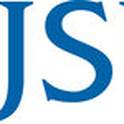Article
Clustering of adverse drug events: analysis of risk factors for cerebellar toxicity with high-dose cytarabine
Journal of the National Cancer Institute
(1992)
Abstract
Background: Cerebellar toxicity is a severe, therapy-limiting adverse reaction of cytarabine given in high doses. The Food and Drug Administration received a report of an increased frequency of cerebellar toxicity at the University of Wisconsin Hospital and Clinics after a switch from the product (Cytosar-U) manufactured by The Upjohn Co., Kalamazoo, Mich., to the generic form made by Quad Pharmaceuticals, Inc., Indianapolis, Ind. Purpose: To compare the incidence of cerebellar toxicity in Quad-treated patients with Upjohn-treated patients, a record-based cohort study was conducted at the University of Wisconsin Hospital and Clinics between January 1986 and August 1989. Methods: The incidence of cerebellar toxicity was studied in 63 leukemia patients according to the manufacturer of the product received (34 Upjohn only, 25 Quad only, and four both manufacturers). The relative risk of cerebellar toxicity was adjusted for other known risk factors. Results: Patients in the manufacturer-defined treatment groups did not differ significantly with respect to age, sex, type of leukemia, disease stage, calculated creatinine clearance, presence of abnormal liver function tests, or total dose received. The crude relative risk of cerebellar toxicity comparing the Quad product with the Upjohn product was 5.0 (95% confidence interval = 1.8–13.7). Adjustment for potential confounders did not alter the association. Other risk factors for cerebellar toxicity, independent of manufacturer, were age greater than 50 years, type of leukemia, disease stage, total dose greater than or equal to 20 g/m, abnormal pretreatment liver function, and reduced creatinine clearance. Conclusion: This study found a significantly higher incidence of cerebellar toxicity with high-dose cytarabine manufactured by Quad Pharmaceuticals when compared with the incidence of cerebellar toxicity with the Upjohn product. Further research at independent institutions would be necessary to allow generalization of this finding. In addition, our findings suggest that a dose reduction in high-dose cytarabine therapy may be indicated for patients with reduced glomerular filtration rates.
Disciplines
Publication Date
1992
Citation Information
H. M. Jolson, L. Bosco, M. G. Bufton, B. Burt Gerstman, et al.. "Clustering of adverse drug events: analysis of risk factors for cerebellar toxicity with high-dose cytarabine" Journal of the National Cancer Institute Vol. 84 Iss. 7 (1992) Available at: http://works.bepress.com/burt_gerstman/19/
